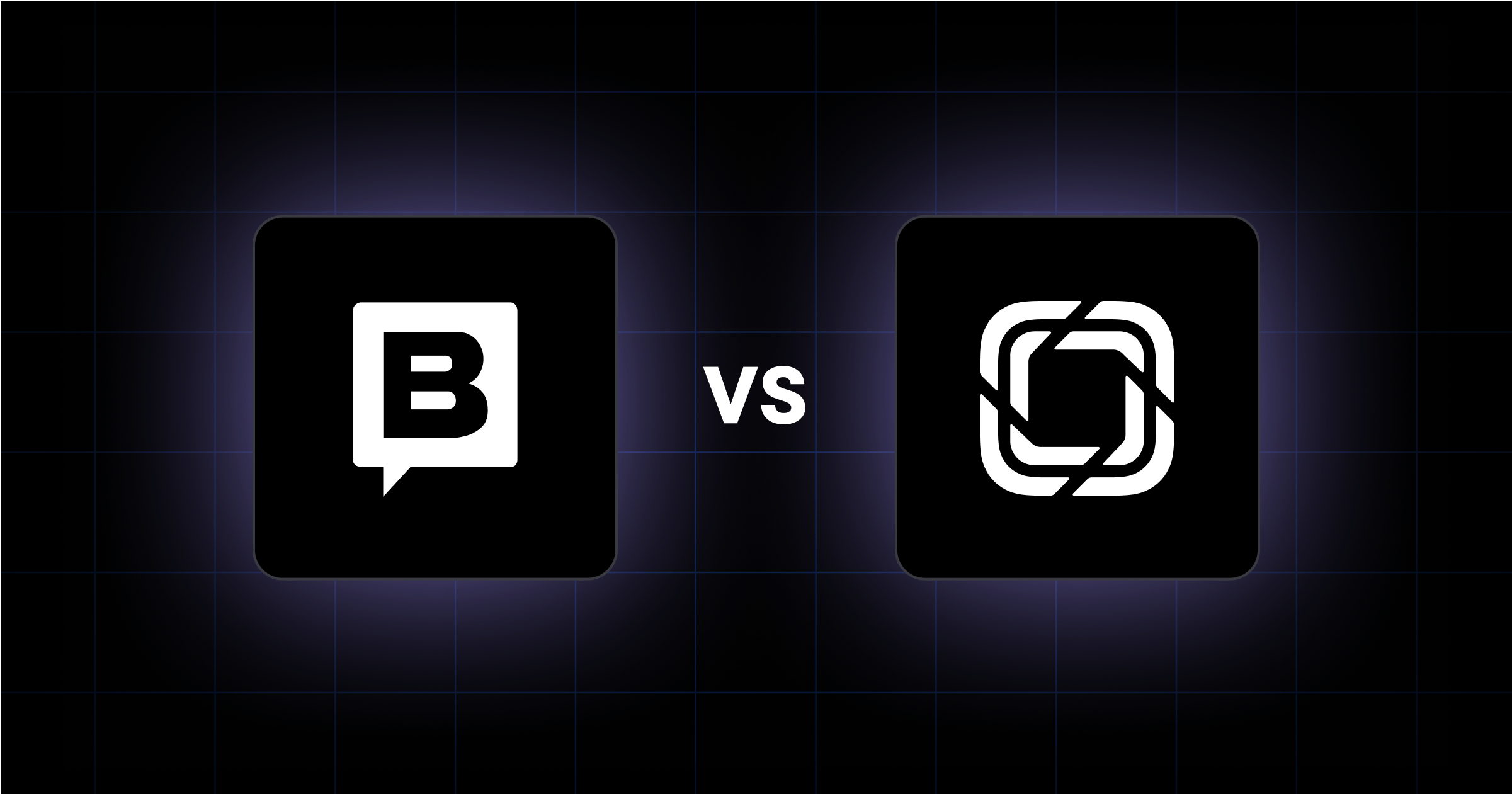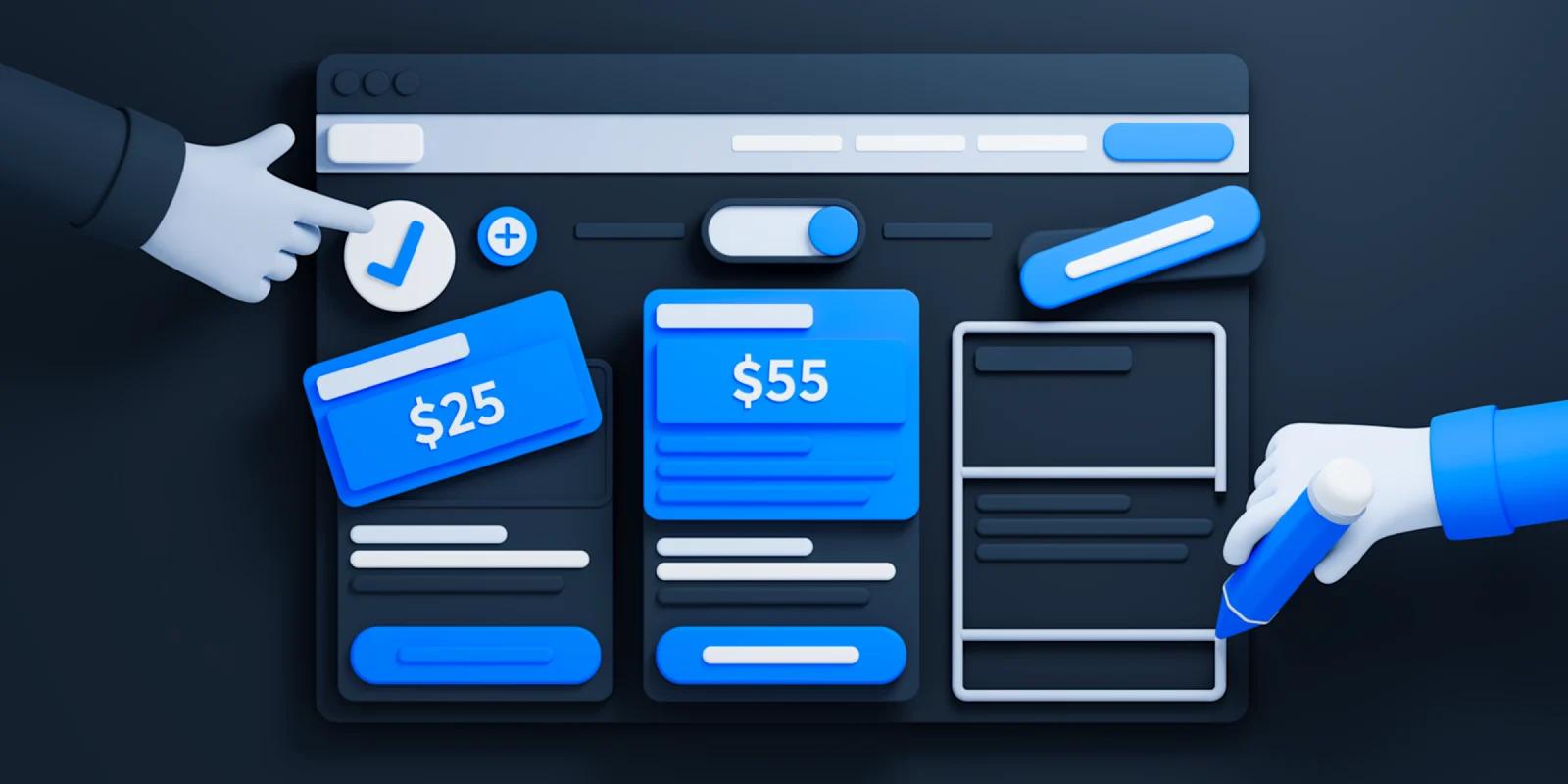Dive into this comprehensive guide to discover how interaction design integrates into your web development strategy and drives your digital success.
In brief:

What is Interaction Design? A Business-Focused Overview
Interaction Design (IxD) is the strategic practice of creating meaningful relationships between users and digital products, focusing on how people engage with interfaces to achieve their goals. For fast-growing companies, it's an investment that directly impacts bottom-line results—studies suggest returns as high as 9,900% for every dollar spent on UX design.
Going beyond visual design, interaction design defines how your digital products behave and respond to user actions. It encompasses everything from button behaviors to complex user flows, making your interfaces intuitive and efficient. Understanding the difference between UI and UX is crucial in this context, as it helps you focus on both the look and feel (UI) and the overall user experience (UX) of your product.
This comprehensive approach leads to measurable business outcomes: increased conversion rates, enhanced customer satisfaction, and improved user retention.
When implemented effectively, interaction design creates a competitive advantage by making your digital products more intuitive and enjoyable to use. It shapes how users perceive your brand through every click, scroll, and tap, ultimately driving engagement and business growth through better user experiences.
The Five Dimensions of Interaction Design
Interaction design operates across five key dimensions that work together to create engaging digital experiences.
1. Crafting Effective Words (1D)
The text in your interface serves as the primary communication tool. Button labels, error messages, and navigation menus are key textual elements. Clear, concise copy in your CTAs can significantly impact conversion rates. For example, changing a generic "Submit" button to "Start Your Free Trial" provides users with clear expectations and can improve click-through rates.
2. Enhancing with Visual Representations (2D)
Visual elements complement your words through icons, images, typography, and data visualizations. Think of progress indicators in checkout flows or status icons in dashboards. Such visual cues help users quickly understand complex information and navigate your interface more efficiently.
3. Designing for Physical Objects and Space (3D)
Designing for different devices and environments helps your digital product adapt effectively. Responsive design enables your interface to work smoothly across desktop, tablet, and mobile devices. Touch-friendly elements on mobile interfaces and appropriate spacing for different screen sizes are important for maintaining usability across platforms. For a comprehensive responsive design checklist, refer to our guide to ensure your designs are optimized for all devices.
4. Incorporating Time in Interactions (4D)
Time encompasses both the duration of interactions and how your interface changes over time. Time-related elements include loading animations, progress bars, and transition effects. For example, showing estimated reading times for content or displaying progress in a multi-step form helps set user expectations and reduces abandonment rates.
5. Defining Behavior (5D)
Behavior defines how users interact with your product and how it responds. Behavioral features include real-time form validation, search auto-complete, and interactive filters. Well-designed behavioral interactions can significantly improve task completion rates and user satisfaction. For instance, providing immediate feedback when users enter invalid data helps them correct mistakes quickly and reduces support requests.
Each dimension builds upon the others to create a cohesive user experience that drives engagement and supports your business goals. By considering all five dimensions in your digital product design, and staying informed about the latest UX design trends, you can create more intuitive and effective user interactions that lead to better business outcomes.

Core Principles of Effective Interaction Design
Interaction design principles form the foundation for creating digital products that delight users and drive business results.
Enhancing Visibility & Clarity
Clear visual hierarchy guides users to important actions, reducing cognitive load and increasing conversion potential. Place high-value elements like CTAs in prominent positions and use contrasting colors to make them stand out. Studies show that following the F-pattern for important content placement can significantly improve engagement rates. For example, an e-commerce site that highlights its "Buy Now" button with a contrasting color and prominent placement can boost conversion rates.
Providing Feedback & Response
Immediate feedback builds user confidence and reduces abandonment rates. Implement loading indicators, success messages, and clear error notifications. When users understand the results of their actions, they're more likely to complete conversion goals. A study by Baymard Institute reveals that 94% of top-grossing sites had basic feedback-related accessibility issues, highlighting the importance of this principle. For instance, displaying a confirmation message after form submission reassures users that their input was received. These strategies can help improve CRO by enhancing user trust and encouraging completion of desired actions.
Applying Constraints & Simplification
Following Hick's Law, limit choices to prevent decision paralysis. Streamline forms and checkout processes by removing unnecessary fields. Research shows that a 1-second delay in response time can reduce conversions by 7%, emphasizing the need for simplified interactions.
Employing Affordance & Mapping
Make interactive elements instantly recognizable through familiar patterns and visual cues. Buttons should look clickable, and navigation should feel intuitive. Use directional cues and visual indicators to guide users through your conversion funnel naturally, reducing friction points that could lead to abandonment.
Remember that these principles work together to create a cohesive experience. When properly implemented, they create an invisible framework that guides users effortlessly toward desired actions while maintaining their confidence and trust in your digital product.
Business Impact of Interaction Design
When you invest in interaction design, you're not just improving user experience—you're directly impacting your bottom line. Studies show that companies can see returns as high as 9,900% for every dollar spent on UX design, making it one of the most profitable investments in your digital strategy.
The business benefits of effective interaction design are measurable and significant. You'll see reduced support costs as users encounter fewer problems using your digital products. Conversion rates typically improve when users can easily complete their desired actions without friction or confusion. Effective design strategies can also improve your conversion funnel, guiding users seamlessly from awareness to action.
Beyond immediate financial returns, good interaction design provides a strong competitive advantage. In today's digital-first marketplace, users quickly abandon difficult-to-use products for more intuitive alternatives. Companies that prioritize interaction design stand out by delivering smoother, more efficient user experiences.
Positive experiences create a virtuous cycle of customer retention and referrals, driving sustainable business growth through enhanced user satisfaction. When users consistently have positive interactions with your digital products, they're more likely to develop a favorable view of your brand and become repeat customers.
Implementing Interaction Design in Your Digital Strategy
To successfully implement interaction design in your digital products, start by evaluating your current user interactions through analytics and user feedback. According to McKinsey research, this data-driven approach can more than double your chances of successful digital transformation.
Begin implementation by conducting thorough user research to understand your audience's needs and behaviors. Utilize UX design tools to create user flows and wireframes that map out key interactions before development begins. When working with a design agency, make sure they follow a prototype-first approach to test and validate interaction patterns before full implementation.
To optimize digital products for better user engagement and increase SaaS conversions, consider integrating solutions that cater to your specific industry needs.
Consider these practical steps for success:
Additionally, selecting the right technology is crucial. For flexible content management, learn how to choose a headless CMS that aligns with your interaction design goals. Collaborate effectively with your design team by adopting Figma best practices, ensuring seamless communication and efficient workflows.
Measure success through both quantitative metrics (conversion rates, time-on-task, error rates) and qualitative feedback (user interviews, satisfaction surveys). Work closely with your design team to establish an iterative improvement process based on real user data and feedback.
Interaction design isn't a one-time project—it requires ongoing optimization. Establish regular review cycles with your design team to analyze performance data and make informed adjustments to your interaction patterns.
Our Take on Interaction Design
At Webstacks, we believe that interaction design is more than just creating functional interfaces—it's about crafting experiences that resonate with users and drive tangible business results. By delving into the nuances of user behavior and expectations, we assist businesses in transforming their digital products into intuitive platforms that exceed user demands. Our expertise in the five dimensions of interaction design enables us to build innovative, user-centric solutions. We understand that effective interaction design enhances user satisfaction and contributes significantly to achieving strategic business objectives. By consistently aligning design strategies with business goals, and implementing effective SaaS UX strategies, we help our clients gain a competitive edge in the dynamic digital environment.

The Strategic Value of Interaction Design
Investing in interaction design is no longer optional for businesses seeking digital success. Beyond creating intuitive interfaces, effective interaction design delivers measurable business outcomes through increased conversion rates, reduced support costs, and enhanced brand perception. A well-defined UX design strategy is essential for aligning your interaction design efforts with your overall business objectives. Companies that prioritize interaction design gain a significant competitive advantage by delivering experiences that satisfy user needs and drive brand loyalty and market differentiation.
Take a critical look at your digital products' interaction design. Are your users achieving their goals efficiently? Is your interface helping or hindering conversion rates? The answers to these questions could reveal opportunities to transform your digital presence into a more powerful business asset.
Ready to optimize your SaaS website structure for growth? See the Webstacks difference: Schedule a brief discovery call today. Let us help you create a website that drives results.




